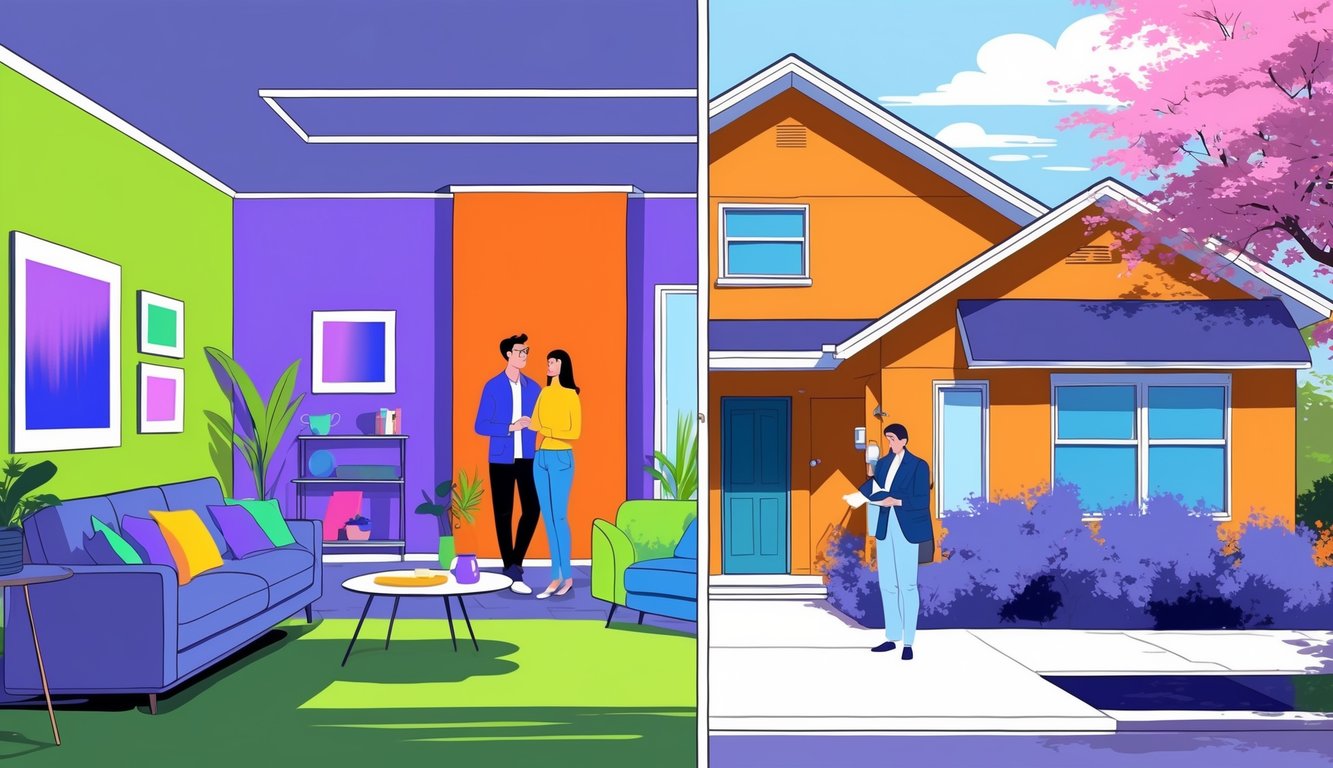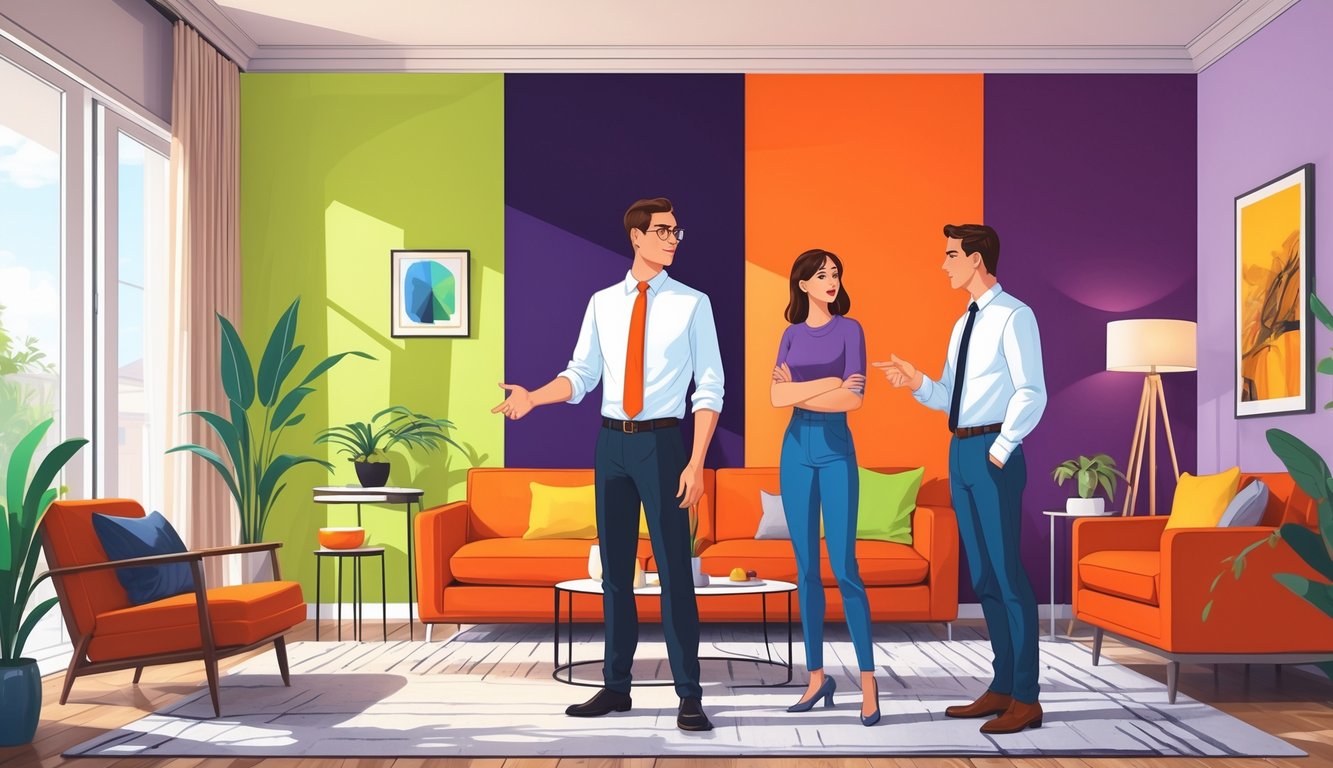
Honestly, I’ve lost count of how many times I’ve seen folks grab whatever color’s hot on Instagram, slap it on the walls, and then—surprise!—regret it the second a buyer walks through the door. I mean, how many navy accent walls does it take before we all admit we’re just chasing trends that backfire? A Boston realtor once told me over coffee, “You can always tell what’s out of style by what’s left behind in empty houses—like that hideous dark wood paneling everyone’s desperate to rip out.” And then there’s me, still wincing over the Zillow report that says buyers will knock off up to four grand for the wrong color (daisy yellow kitchens, anyone?). I recommended yellow twice last year. My inbox, not fun.
You ever see Property Brothers roll their eyes at a bright red bathroom? That’s the stuff of seller nightmares. I had a client, totally convinced faux leather paint would be a hit—she texted me mid-open house, furious, and the place just felt… sad. Paint seems like a small thing, but honestly, every single data point I’ve ever seen (and I’m not just talking anecdotes here) screams that buyers’ gut reactions rule. Want top dollar? Ignore paint at your own risk. Why did I think olive green was a good idea in 2020? Still annoyed at myself. And nobody ever warns you about first impressions until, well, it’s already too late.
The Impact of Paint Color Choices on Home Sales
Sometimes I step into a house and, boom, first impression, I’m done—even if there’s a Viking range in the kitchen. Paint colors mess up sales way more than clutter. It’s not just “oh, I don’t like teal,” it’s resale value, curb appeal, and buyers’ weird, unpredictable instincts.
How First Impressions Influence Buyer Interest
Paint is like a leftover mood from whoever lived there before, right? Zillow claims about a third of sellers repaint before listing, thinking buyers won’t care. They do. They really, really do. Apparently, muted greens in kitchens can bump offers by $1,600 (Zillow, 2024). But slap egg-yolk yellow on entry walls? Watched a client drop their offer by thousands, not kidding.
Navy blue and olive green? People call them “modern” or “organic,” and buyers seem to think that means value. Bright red or harsh yellow? Realtor.com says people just get weird vibes, and prices tank—sometimes by four grand, even if the rest of the place is perfect. Custom color? Doesn’t matter. Realtors all agree: neutral is safest, but if it looks dingy or old, that’s just as bad.
I keep hearing, “Buyers can repaint.” Sure, but do they want to? If your paint looks like a failed Pinterest experiment, buyers assume you skipped maintenance everywhere else. It’s like a chain reaction.
Emotional Responses to Paint Colors
Buyers never say it out loud, but their faces give it away—paint color can totally decide if they stay or bolt at an open house. Navy bedrooms? Calming. Olive green kitchens? Apparently, people feel “nature” vibes. But yellow or cherry red? I swear, you can watch people physically recoil, like they’re back in a middle school cafeteria.
Maroon? Never seen anyone get excited. Someone once told me it felt like a dentist’s waiting room. Light grays and soft greens (Behr’s “Nature’s Gift,” for example) get buyers asking questions, which is good. There’s a psychology to it: certain colors make people trust the place, feel like it’s clean, or even think it’s more expensive—even if you bought the cheapest paint at Home Depot.
But then again, beige or “builder’s white” can totally flop, too. Sometimes people think you’re hiding something or just didn’t care. I once staged a house with a pale blue accent wall—buyers loved it, offered more, said it “felt like home.” Maybe there’s science, maybe it’s just dumb luck. Half the time, it’s about comfort versus that weird, instant “nope” feeling.
Popular Paint Choices Homeowners Regret When Selling

It drives me nuts—people act like painting over a bad color is no big deal (“just throw some white on it!”), but then buyers step inside and freeze. Same mistakes every year: bold colors, chasing trends, and those “statement” walls that realtors (like me) end up begging clients to repaint just to avoid losing money.
Bold Colors That Drive Buyers Away
I watched a couple repaint a cherry red dining room right before listing because someone at an open house whispered, “Feels like a diner.” They paid for paint twice. Bright reds, blues—especially cobalt—split buyers right down the middle.
Zillow’s data (yes, the one about daisy yellow kitchens and living rooms costing you $4,000) sounded fake until I saw it happen. People get nervous about bold greens, peacock blues, deep purples. If a party guest comments on your wall color, it’s probably scaring buyers, too. Designers (Boden, in that MSN article) say stick to neutrals for big rooms, save wild colors for pillows.
And this idea that buyers “have vision”? Most don’t. Bold colors just make things harder. Think about it—everyone squinting at your navy wall at an open house? Not ideal.
Unconventional Colors and Buyer Perception
Avocado green, millennial pink, pastel lavender—if that’s your thing, cool, but do you really want to make it their thing? Saw a survey last month: 53% regretted avocado, 49% eggshell white, 44% millennial pink. When even designers start second-guessing, maybe it’s time to listen.
My investor friend had to repaint a whole condo because the last owner loved purple haze in the living room and “vintage” mustard in the kitchen. People joked about Easter eggs. At one open house, a kid literally asked, “Why is it like this?” Ouch.
Unusual colors scream “someone else lives here,” but buyers want to imagine themselves in the place. I hear it all the time from other agents: if you want a quick sale, ditch the colors that make people pause or ask questions.
Trendy Shades That Don’t Age Well
Remember when millennial pink was everywhere? Or when “greige” was the only acceptable kitchen color? Trends sell paint, not houses. Avocado green appliances were “modern” in the ‘70s, now they’re just expensive to replace.
I’ve lost track of how many “color of the year” living rooms I’ve had to repaint. Neutrals always come back in style. A trendy but outdated color can slow down a sale and cost you $2,500–$4,000, according to Zillow. Still, people chase the next big thing and end up repainting anyway.
Let the fashion world chase trends. Houses aren’t runways. If you want to actually sell, stick with classic whites, light grays, or that warm greige everyone seems to tolerate. Beige might be boring, but nobody complains when the offers come in.